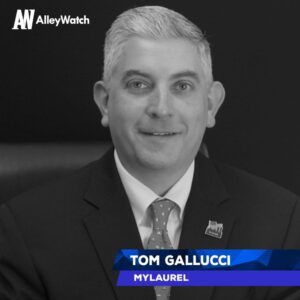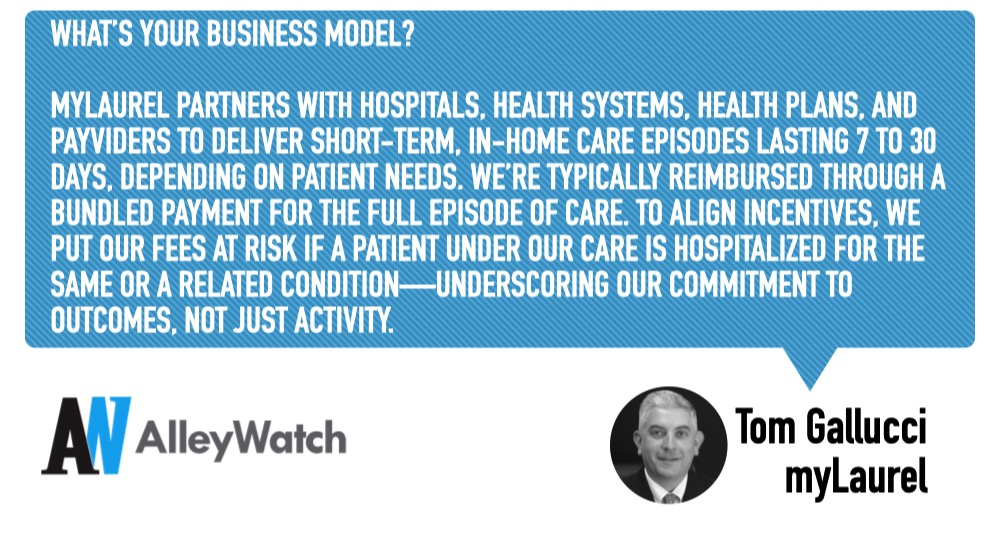As the healthcare system faces a looming crisis with potential hospital bed shortages by 2032 and an aging population driving increasingly complex medical needs, the traditional model of emergency room visits and lengthy hospital stays is becoming unsustainable. With healthcare costs skyrocketing and patient satisfaction declining, there’s an urgent need for innovative care delivery models that can provide high-quality treatment while reducing the burden on overstretched hospital systems. myLaurel is transforming this landscape by delivering acute and transitional care directly to patients’ homes, helping frail, elderly, and medically complex patients avoid the traditional care path of ambulance, ER, hospital admission, and nursing facility. Through a technology-enabled medical group model, they provide on-demand care that has achieved remarkable outcomes: 33% lower ED utilization, 49% fewer readmissions, and 3,000+ bed days saved per hospital annually. myLaurel offers three core care models—Rapid Advanced Care™, Acute Care at Home™, and Recovery at Home™—to address one of healthcare’s most pressing challenges.
AlleyWatch sat down with myLaurel CFO Tom Gallucci to learn more about the business, its future plans, and recent funding round, which bring the company’s total funding raised to $119.4M, and much, much more…
Who were your investors and how much did you raise?
We have closed on ~$12M thus far, and we will likely take in a bit more before the final close later this month. It is a convertible note effectively meant to fund key milestones between seed and an A round.
Select investors include Deerfield, GV, Emerson Collective, Ochsner Ventures, Pinta Partners, and management.
Tell us about the product or service that mylaurel offers.
myLaurel was founded on the belief that a portion of today’s hospital care can—and should—be delivered in the comfort of home. As a tech-enabled medical group, we provide on-demand acute and transitional care to frail, elderly, or medically complex patients at home—helping them avoid the traditional care path of ambulance, ER, hospital admission, and nursing facility.
Health systems, provider groups, and payers partner with us to reduce avoidable utilization, improve readmission rates, accelerate discharges, and enhance patient experience—all while maintaining the highest standards of care and safety. We stand behind our outcomes with our partners, putting our fees at risk to demonstrate our commitment and confidence in delivering results.
Headquartered in New York, myLaurel delivers hands-on clinical care guided by remote physicians and supported by advanced technology, diagnostics, and therapies. The result: 33% lower ED utilization, 49% fewer readmissions, 3,000+ bed days saved per hospital annually – enabling over 640 additional acute inpatient admissions – and a patient Net Promoter Score of 96.
Our three care models provide the framework and expertise to avoid unnecessary utilization, improve throughput and reduce readmissions.
- Rapid Advanced Care™reduces preventable acute utilization before a hospital visit with on-demand rapid response in home with physicians leading in-home care team to treat in place and continuously care for 7 days.
- Acute Care at Home™ service reduces Observation / IP utilization and/or reduces Length of Stay by discharging patients home sooner, supported with acute and transitional care in the home for up to 30 days.
- Recovery at Home™ avoids 15 – 30 Day Readmission after a hospitalization through in-person and virtual management for higher readmission risk patients.
What inspired the start of mylaurel?
 myLaurel was inspired by a personal experience of our CEO, Juan Vallarino. In his father’s final year of life, he visited the emergency department eight times—often needing care, but not hospitalization. The cycle was emotionally and physically taxing for his father and family, especially Juan’s mother, and placed unnecessary strain on the health system.
myLaurel was inspired by a personal experience of our CEO, Juan Vallarino. In his father’s final year of life, he visited the emergency department eight times—often needing care, but not hospitalization. The cycle was emotionally and physically taxing for his father and family, especially Juan’s mother, and placed unnecessary strain on the health system.
As a longtime hospital executive, Juan walked away from that experience believing there had to be a better way to care for certain patients—one that is more patient-centered, effective, and efficient. That conviction became the foundation for myLaurel. Partnering initially with Ochsner Health, we developed our core service: Acute Care at Home, designed to deliver advanced care in the comfort of patients’ homes.
How is mylaurel different?
We are a technology-enabled mobile medical group. We provide acute + transitional care to complex patients in their home with skilled in-home clinicians, led by remote physicians and nurses supplemented by technology, supplies and therapies. We go at risk for outcomes and generate at least a 3:1 ROI for our clients.
What market does mylaurel target and how big is it?
myLaurel targets two primary segments: health systems and risk-bearing organizations. Our core Acute Care at Home service addresses major operational pain points for hospitals—such as reducing length of stay, avoiding readmissions, and improving patient throughput—making the vast majority of U.S. hospitals a sizable target market.
Beyond hospitals, our Rapid Advanced Care and Recovery at Home services are designed for health plans and “payviders,” focusing on their highest-risk members who drive a disproportionate share of healthcare costs. Together, these segments represent a multibillion-dollar opportunity as the healthcare system shifts care into the home.
What’s your business model?
myLaurel partners with hospitals, health systems, health plans, and payviders to deliver short-term, in-home care episodes lasting 7 to 30 days, depending on patient needs. We’re typically reimbursed through a bundled payment for the full episode of care. To align incentives, we put our fees at risk if a patient under our care is hospitalized for the same or a related condition—underscoring our commitment to outcomes, not just activity.

How are you preparing for a potential economic slowdown?
Our focus on high-acuity, medically complex patients means demand for our services tends to be inelastic, even in a downturn. In fact, because our model consistently reduces total cost of care and delivers strong ROI, we’re often a source of financial relief for health systems and payers facing budget pressures. Internally, we maintain a disciplined approach to efficiency, resource optimization, and operational agility—capabilities that become even more valuable in a challenging economic environment.
What was the funding process like?
We are fortunate to have strong supporters, particularly Deerfield and GV, so while the macro environment remains tight, our capital raise has been successful.
What factors about your business led your investors to write the check?
While we can’t speak directly for our investors, we believe their conviction stems from our ability to deliver real, measurable value. By shifting care to the lowest-cost, most appropriate setting—the home—we generate a strong ROI for a large and growing market of health systems and payers. Our model supports solid unit economics and long-term sustainability, which, combined with proven outcomes and growing demand, made for a compelling investment thesis.

What are the milestones you plan to achieve in the next six months?
The capital raised will fuel the next phase of myLaurel’s growth. In the next six months, we plan to:
- Drive increased patient volume in existing markets like New York and Louisiana
- Deepen partnerships with current clients through expanded services and sites
- Launch new anchor health system partnerships in additional markets
- Continue building a best-in-class clinical team to support high-quality, scalable care
These milestones will help us deliver on our mission while laying the groundwork for broader national expansion.
What advice can you offer companies in New York that do not have a fresh injection of capital in the bank?
Start early, as the process often takes longer than one might expect.
Where do you see the company going now over the near term?
Continuing to add density within existing markets, anchored around Acute Care at Home expansions both within existing facilities, across new sites with current clients, and with new clients where we see opportunities to land and expand.
What’s your favorite spring destination in and around the city?
Our team likes hiking around Beacon, and you can’t beat the beaches on Long Island!


